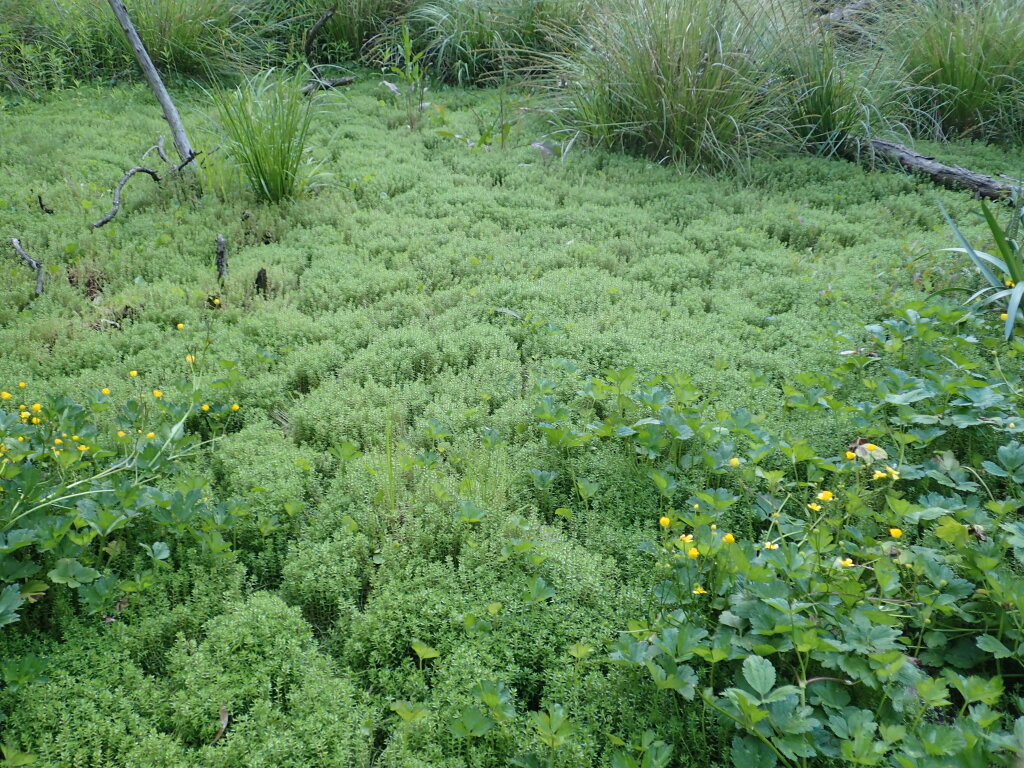Crassula helmsii
(Kirk) Cockayne Swamp CrassulaPerennial aquatic or semi-aquatic herb with branches decumbent, usually to c. 12 cm long, often rooting at nodes, rarely floating and to 30 cm long. Leaves c. linear to narrowly elliptic, 3–18 mm long, 0.4–3 mm wide, acute to acuminate at least when young, flat above, often very convex below; sheath 0.4–1 mm long. Flowers solitary in axil of 1 leaf at usually non-successive nodes and on alternating sides of a branch; 4-merous; calyx-lobes oblong-triangular, 0.8–1.9 mm long, acute to obtuse; corolla white tinged red, lobes oblong-oblanceolate, 1.2–2.1 mm long, usually acute, spreading to recurved; nectary scales narrowly oblong-cuneate, 0.6–1.1 mm long, 0.17–0.35 mm wide, truncate; carpels obovoid, each with 2–10 ovules, styles at least half as long as carpels. Follicles poral; fruiting pedicel scarcely elongating 1.8–7 mm long; seeds 0.40–0.55 mm long, smooth and without longitudinal ridges. Flowers mainly Aug.–Nov.
MuM, Wim, GleP, Brid, VVP, VRiv, MSB, RobP, MuF, GipP, OtP, WaP, Gold, CVU, GGr, DunT, NIS, EGL, EGU, WPro, HSF, HNF, OtR, Strz, MonT, VAlp. Also WA, SA, NSW, Tas., New Zealand. Introduced and rapidly spreading in England and central Europe. Typically occurring along banks of rivers, creeks, lakes or swamps and showing great tolerance to temporary or prolonged inundation and/or high salt levels.
Plants vary from a moss-like habit with often prostrate branches to 2 cm high, frequently rooting at the nodes and with short leaves, to those with floating branches to 35 cm long, little branched and usually with no adventitious roots, and with much larger leaves.
Toelken, H.R.; Jeanes, J.A.; Stajsic, V. (1996). Crassulaceae. In: Walsh, N.G.; Entwisle, T.J., Flora of Victoria Vol. 3, Dicotyledons Winteraceae to Myrtaceae, pp. 542–555. Inkata Press, Melbourne.
 Spinning
Spinning


